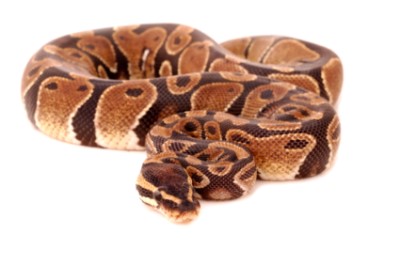Common Reasons for Surrender
Most snakes are surrendered because they get too big to handle. So few people surrender the garter snake because he is easier to care for and he does not get very big. The only reason a garter snake is surrendered is because kids go off to college, and they can’t take the snake with them.
Pros
The garter snake is very active and visually oriented. When you look at a garter snake, he looks back at you and always watches what is going on in your world, too. They are very entertaining because when you show your snake to guests, the snake will look right at them. The enjoyment of snake and snake keeper is to keep them in larger cages that are set up nicely. If you set up a big tank for your garter, they will cruise around.
Cons
Reptile rescuers told PetStarter that the garter snake “poops a lot,” so you have to clean the cage often.
Diet
The garter snake does not need mice to live. They are opportunistic feeders and will eat previously frozen, thawed mice, but their favorite food is fish, especially raw tilapia, guppies, mollies, flatties, salmon, and trout. Do not feed goldfish to the garter snake or to any reptile as it will make him sick due to the high thiaminase concentration in the fish. You can buy the fish frozen and cut it into chunks and thaw it out in hot water. If you put that bowl of hot water and fish on top the cage, the garter snake can smell the fish and gets excited that dinner is on the way. Because this snake is so active, she needs to be fed one time per week. You can use a long pair of forceps to feed your garter snake.
Exercise
If you have a big enough tank, they cruise. If your snake becomes inactive, he is probably preparing to shed and will move less and eat less.
Possible Health Issues
The big two health issues are a blister disease that comes from keeping the tank too wet and the thiamine issue. They can catch colds and have problems with mites, but any health problems with this snake is usually care related. If you give proper care to your snake, they won’t have a lot of problems.
Housing
This snake needs nothing smaller than a twenty-gallon aquarium, at least three feet long. Like most reptiles, the garter snake needs a thermal gradient in her enclosure—a place to warm up and a place to cool down. You can place a basking rock below your heat lamp, but be sure that the heat lamp is on one side of the cage and not in the middle. The thermostat of your basking spot in the cage should be set at 85 degrees. The cool end of the tank is set for low- to mid-70s. You may place cork bark, silk plants, vine, branches, rocks, old garden tools, and a broken flower pot to make your vivarium look like a snake slithering in the garden.
Warning! Do not place anything heavy on the bottom of the tank. This snake loves to burrow and if he gets underneath a heavy dish or rock, it may crush and kill the snake. Be sure the large water dish is resting on the glass at the bottom of the tank and not on top of the bedding.
Grooming
You can use Care Fresh, a recycled wood pulp product in the bottom of the tank. The garter snake will burrow through it and, more importantly, if the garter accidentally ingests the substrate, it will go right through the snake. Aspen does not work with this snake. The garter snake feces can be treated like kitty litter. You just remove it with the forceps. Do a full clean sweep of the cage twice a year.
Water evaporates from the water dish and provides ample humidity. If the garter has a hard time shedding, you can get a misting bottle and spray one side of the cage so the little extra humidity helps him with the shedding. Pull dead skin out of the tank after she sheds.
Training
No matter how many generations you breed any snake, they are still wild animals. The garter can get used to being around people, but he will always behave as a wild animal, not a domesticated house cat.
Entertainment
The garter snake loves to cruise around the tank. You can provide enrichment for your snake by gathering oak leaves in the fall and tossing them in the tank. Oak leaves break down well, and the snake will enjoy sniffing through the new material.
ADDITIONAL RESOURCES
For interactive discussion forum go to www.herpcenter.com
http://www.reptilerescuealliance.org/
The Great Big Book of Snakes and Reptiles by Barbara Taylor and Mark O’Shea
We want to thank Lancaster Herpetological Society, Lancaster, Pennsylvania, and Forgotten Friend, Lancaster, Pennsylvania for help with this profile.




